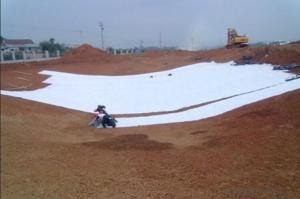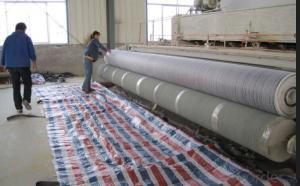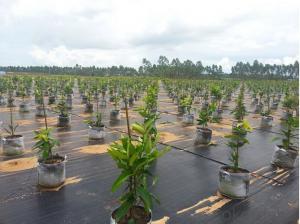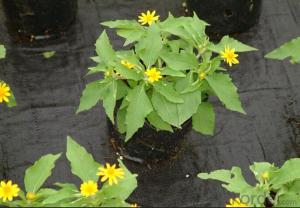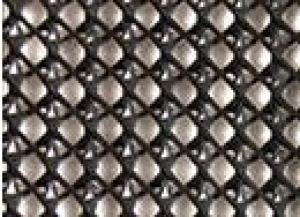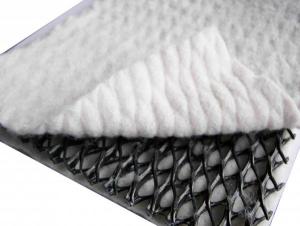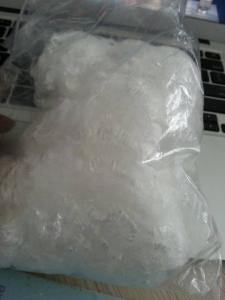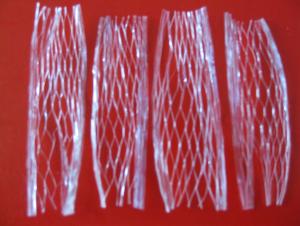Hot Sell Geocomposite Geosynthetic Clay Liner/GCL
- Loading Port:
- Qingdao
- Payment Terms:
- TT OR LC
- Min Order Qty:
- 5000 m²
- Supply Capability:
- 100000 m²/month
OKorder Service Pledge
OKorder Financial Service
You Might Also Like
GCL(Geocomposite Geosynthetic Clay Liner)
Description :
Geosynthetic clay liners (GCLs) are high performance needle punched environmental reinforced composites which combine two durable geotextile outer layers with a uniform core of natural sodium bentonite clay to form a hydraulic barrier. Fibers from the non-woven geotextile are needle punched through the layer of bentonite and incorporated into the other geotextile (either a woven or non-woven).when hydrated under a confining load, the bentonite swells to form a low permeability clay layer with the equivalent hydraulic protection of several feet of compacted clay.
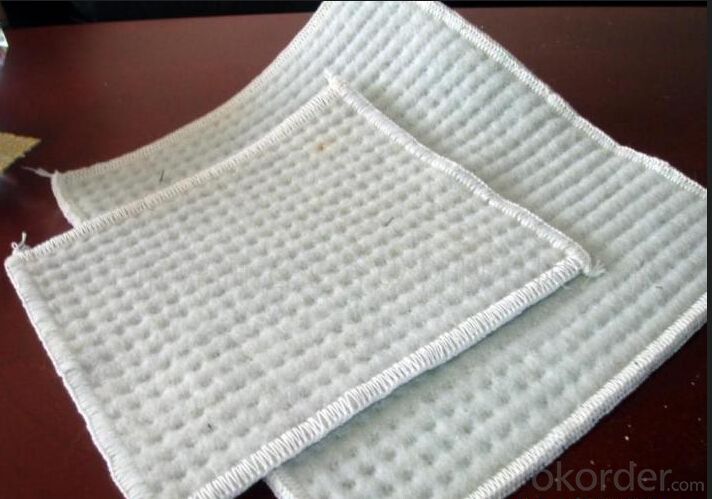
Specification:
Mass per unit ≥ 4000g / m²
Width: 4-6 m
Size: 5.8 x 30m , or customized
bentonite sandwiched between two layers of geotextile
Features:
1) Environment friendly. Liu Fangzi GCL is made of natural raw materials of sodium bentonite. Aging and corrosion never happen. It can keep its quality and then it does not cause any injuries and pollution for human and the environment. It is not only waterproof, but also has good ventilation performance. It can stick up for the exchange of the ecological environment. It is a pure natural, new, green waterproof material.
2) Permanent waterproof, excellent performance. Natural sodium bentonite has been formed for billions of years.Its waterproof properties are much longer than that of the buildings. Sodium bentonite would transform to high density septum under hydro pressure. When the thickness is 3mm, the permeability is below a×10-11/sec(a=1~9), which equals to the density of 100 times of the clay with 30 mm thickness. Water retention performance is evident.
3) Easy to use. Bentonite powder, nails and washers are enough for connection and fixation. Construction is not constrained by weather conditions and it could be taken under cold or wet conditions. Bentonite powder is spread on overlap point. When water comes, GCL would be overlapped automatically. It has been so far the only material that starts the waterproof effect by water in the world. It is not necessary to take additional examination when the construction is completed. The repair works are easy in case of waterproof defects. Among the existing waterproof materials, GCL’s construction period is the shortest and its operation is the easiest. It has an eminent effect on shortening the construction period as well as saving the cost.
4) Strong Self-Restore Capacity. The integration between waterproof material and its target enables GCL a 20~28 times swelling volume. Even if concrete structure trembles or subsides, the bentonite in GCL would restore the crack of 2mm or below on the concrete structure immediately. Even if the diameter of perforation reaches 30 mm, the restoration will be finished within 15 days completely.
Applications:
Seepage proofing, anticorrosion, leaking stoppage and reinforcement
1. Municipal engineering, underground construction of subway, buildings as well as the roof tank.
2. Environmental sanitation, solid waste landfill, sewage farm, industrial waste
3. water conservancy, lake, river, dam and reservoir.
4. Garden and park, artificial lake and golf cause pool.
5. Petrochemical engineering, mining industry and agriculture engineering

GCL Technical Index
Item | Specification | ||||
GCL-NP | GCL-OF | GCL-AH | |||
Mass per unit g/m2 | ≥ 4000 (not less than the specified value) | ≥ 4000 (not less than the specified value) | ≥ 4000 (not less than the specified value) | ||
GCL expansion index ml/2g | ≥24 | ≥24 | ≥24 | ||
Blue absorption power g/100g | ≥ 30 | ≥ 30 | ≥ 30 | ||
Tensile Strength N/ 100mm | ≥ 600 | ≥ 700 | ≥ 600 | ||
Elongation at maximum load % | ≥ 10 | ≥ 10 | ≥ 8 | ||
Peel strength N / 100mm | Nonwoven geotextile and woven geotextile | ≥ 40 | ≥ 40 | - | |
PE geommebrane and nonwoven geotextile | - | ≥ 30 | - | ||
Permeability coefficient m/s | ≤ 5.0x10-11 | ≤ 5.0x10-12 | ≤ 1.0x10-12 | ||
Hydrostatic pressure resistant | 0.4 Mpa , 1h, no leakage | 0.6 Mpa ,1h,no leakage | 0.6Mpa ,1h, no leakage | ||
Filter loss ml | ≤ 18 | ≤ 18 | ≤ 18 | ||
Durability of bentonite ml/ 2g | ≥ 20 | ≥ 20 | |||
FAQ:
How many quantity for one 20'' container?
About 5,000m2, 16rolls
What's your delivery time?
About 15-20days against deposit received
. What's your package?
Per roll with two pieces woven bag
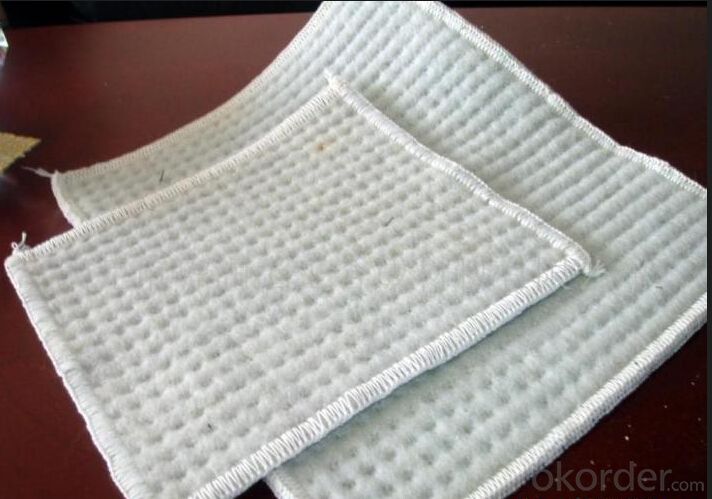
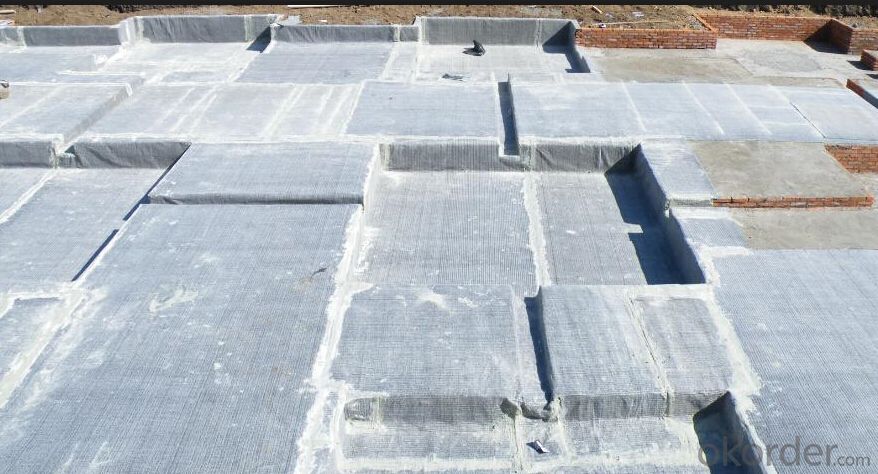
- Q:What are the advantages of using geotextile tubes in beach nourishment projects?
- There are several advantages of using geotextile tubes in beach nourishment projects. Firstly, geotextile tubes provide a cost-effective solution compared to traditional methods, such as dredging or importing sand, as they can be filled with locally available material. Secondly, these tubes have a lower environmental impact as they prevent the loss of sediment during placement and reduce the potential for erosion. Additionally, geotextile tubes offer flexibility in shaping the beach profile, allowing for customized designs to meet specific project requirements. Overall, geotextile tubes provide an efficient, environmentally-friendly, and customizable solution for beach nourishment projects.
- Q:Are earthwork products easy to install and maintain?
- Yes, earthwork products are generally easy to install and maintain. These products, such as retaining walls, erosion control measures, and geosynthetic materials, are designed to be user-friendly and require minimal expertise for installation. Additionally, they are typically durable and low-maintenance, reducing the need for frequent repairs or replacements.
- Q:Can geosynthetics be used for reinforcement in dam construction?
- Yes, geosynthetics can be used for reinforcement in dam construction. Geosynthetics, such as geotextiles and geogrids, provide additional strength and stability to the dam structure. They can be used to improve the tensile strength, enhance filtration and drainage, and reduce seepage within the dam. Additionally, geosynthetics offer cost-effective and environmentally friendly solutions for dam construction and maintenance.
- Q:How do geogrids aid in reinforcement of bridge abutments in earthwork projects?
- Geogrids aid in the reinforcement of bridge abutments in earthwork projects by providing additional tensile strength and stability to the soil. They are installed within the soil layers to distribute lateral forces and prevent soil movement, which helps to increase the overall strength and load-bearing capacity of the abutments. Additionally, geogrids can also reduce settlement and improve the long-term performance of the bridge abutments by minimizing soil erosion and enhancing the overall durability of the structure.
- Q:What are the benefits of using geocells in erosion control projects?
- One of the main benefits of using geocells in erosion control projects is their ability to provide structural support and stability to the soil. Geocells are typically made of high-density polyethylene and are filled with soil or aggregate material. When placed on slopes or along riverbanks, they prevent erosion by confining the fill material and increasing its resistance to movement. Additionally, geocells allow for vegetation growth, reinforcing the natural ecosystem while minimizing the environmental impact of erosion control measures.
- Q:What is the difficulty of civil engineering materials?
- This thing needs to be understood, not known.
- Q:How are geosynthetic materials used in athletic field construction?
- Geosynthetic materials are commonly used in athletic field construction to enhance the performance, durability, and stability of the playing surface. They are used as base reinforcement, providing strength and preventing soil movement. Additionally, geosynthetics are used as drainage systems, allowing for efficient water management and preventing waterlogging. These materials also aid in soil stabilization, reducing the risk of surface irregularities and improving player safety. Overall, geosynthetics play a crucial role in ensuring the longevity and quality of athletic fields.
- Q:What is the lifespan of earthwork products?
- The lifespan of earthwork products can vary depending on various factors such as the type of material used, the quality of construction, and the level of maintenance. However, with proper planning, design, and regular upkeep, earthwork products such as retaining walls, embankments, and slopes can last for several decades to even centuries.
- Q:What are the advantages of using geotextiles in shoreline erosion control projects?
- Geotextiles offer several advantages in shoreline erosion control projects. Firstly, they provide effective stabilization by preventing soil erosion and promoting vegetation growth. Secondly, they act as a barrier between the water and the shoreline, reducing wave energy and protecting the coastline from further erosion. Additionally, geotextiles are environmentally friendly and cost-effective compared to traditional methods such as concrete structures. They are easy to install and maintain, making them a practical solution for managing shoreline erosion.
- Q:What are the advantages of using geosynthetic materials in groundwater recharge projects?
- There are several advantages of using geosynthetic materials in groundwater recharge projects. Firstly, geosynthetic materials such as geotextiles or geogrids provide effective filtration, preventing the entry of sediment and contaminants into the groundwater during the recharge process. This helps in maintaining the quality of the recharged water. Secondly, geosynthetics help in controlling the flow of water, ensuring uniform distribution of water across the recharge area. This helps in maximizing the recharge efficiency and minimizing the loss of water due to uneven distribution. Additionally, geosynthetics offer high tensile strength and durability, allowing them to withstand the pressures and stresses associated with groundwater recharge projects. This ensures their long-term performance and reduces the need for frequent maintenance or replacement. Furthermore, geosynthetics are lightweight and easy to handle, making them cost-effective and convenient to install. They can be easily customized to suit the specific requirements of the recharge project, providing flexibility in design and implementation. Overall, the use of geosynthetic materials in groundwater recharge projects enhances the effectiveness, efficiency, and longevity of the recharge system, leading to sustainable water management and conservation.
1. Manufacturer Overview |
|
|---|---|
| Location | |
| Year Established | |
| Annual Output Value | |
| Main Markets | |
| Company Certifications | |
2. Manufacturer Certificates |
|
|---|---|
| a) Certification Name | |
| Range | |
| Reference | |
| Validity Period | |
3. Manufacturer Capability |
|
|---|---|
| a)Trade Capacity | |
| Nearest Port | |
| Export Percentage | |
| No.of Employees in Trade Department | |
| Language Spoken: | |
| b)Factory Information | |
| Factory Size: | |
| No. of Production Lines | |
| Contract Manufacturing | |
| Product Price Range | |
Send your message to us
Hot Sell Geocomposite Geosynthetic Clay Liner/GCL
- Loading Port:
- Qingdao
- Payment Terms:
- TT OR LC
- Min Order Qty:
- 5000 m²
- Supply Capability:
- 100000 m²/month
OKorder Service Pledge
OKorder Financial Service
Similar products
New products
Hot products
Hot Searches
Related keywords
